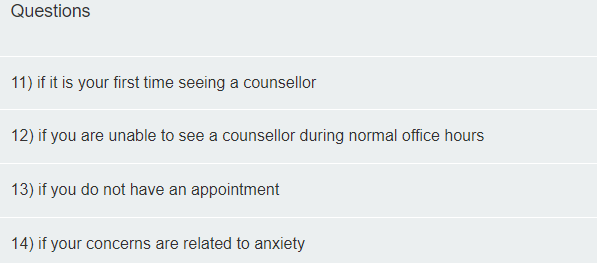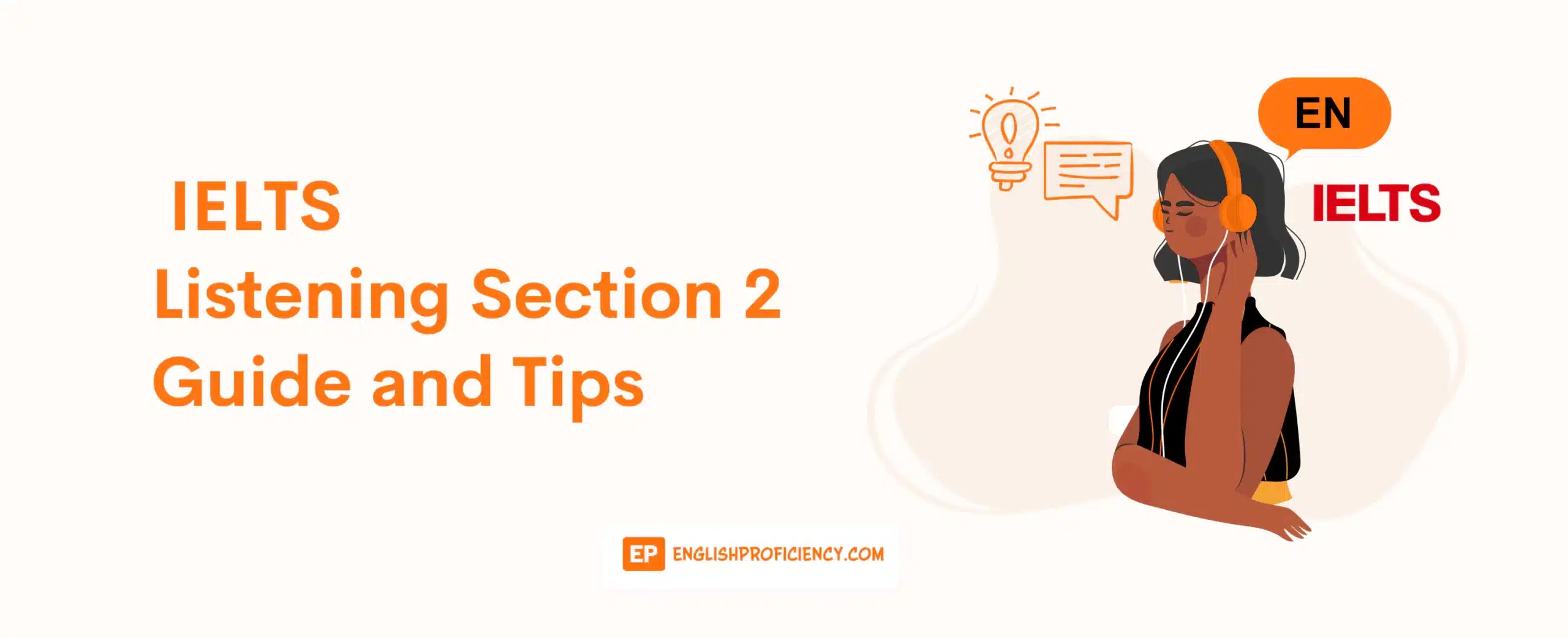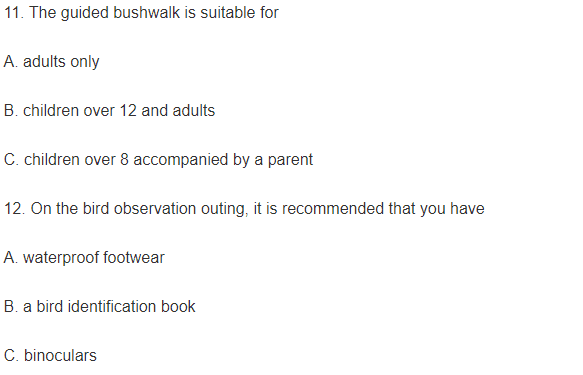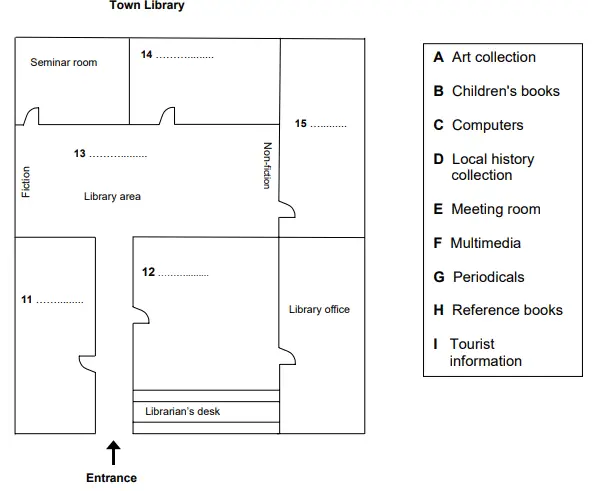The IELTS Listening Section 2 is the second part of the IELTS Listening Test. It is generally more challenging than the IELTS Listening Section 1 because the difficulty level increases from one section to the next.
Understanding the test format, knowing how the test is administered, and familiarizing yourself with the different kinds of questions in the IELTS Listening Section 2 are the key factors that will aid you in achieving a high band score in this part of the test.
In this article, we have gathered all of these and everything there is to know about the IELTS Listening Section 2, so keep reading.
IELTS Listening Overview
The IELTS Listening Test is one of the four tests in the IELTS Test.
It is the same for the IELTS Academic and the IELTS General Training modules. It has four parts, and there are ten questions to answer in each part. The material is played via audio recordings that will be played only once.
The IELTS Listening Section 1 is the first of the four sections of the IELTS Listening Test:
- Part 1 or Section 1
- Part 2 or Section 2
- Part 3 or Section 3
- Part 4 or Section 4
IELTS Listening Section 2 Format
In the IELTS Listening Section 2, you will hear a 4 to 5-minute speech or talk in a social situation with just one person.
Examples are a tourist information officer discussing a tour, a museum guide explaining where the different portions of the museum are located, someone outlining the benefits of joining an organization such as a fitness club, or a radio advice show marketing a product or an event.
Pay close attention to the audio recordings and the directions. If necessary, take notes.
Follow the instructions because even if your answers are right, they will be deemed incorrect if you do not write the required number of words/numbers. Write your responses on the question booklet as you listen to the audio recordings.
After all audio recordings have been played, you will have 10 minutes to transfer your answers to your answer sheet.
IELTS Listening Section 2 General Listening Tips
Your marks in the IELTS Listening Section 2 account for your overall marks in the IELTS Listening Test. Thus, you must give your best performance in this part of the test to get a high band score.
Below are the best and most effective tips and advice we can give you to help you ace the IELTS Listening Section 2 with flying colors.
- Stay focused.
Do not be perplexed by all the many voices you will hear.
The audio recordings incorporate a variety of voices, including those of men and women of various ages. You may also hear a variety of accents, including Australian, British, American, and Japanese. The background noise varies as well. It may be an airport, a cafe, a street, a university lecture hall, or anything else.
Prepare for it and do not let it distract you – it is exactly what they want. Ignore the background noises and pay attention to the answers.
- Pay attention to details.
Look for dates, places, phone numbers, opening hours, years, and modes of transportation
while listening. If you hear them but do not know where to put them, write them on the margins of the IELTS Listening booklet.
You will have some time afterward to double-check your responses. You will realize that what you wrote in the margins suits the questions you could not answer while the audio recordings were played when you go over them again.
- Answer as you listen.
Because you immediately forget the sentences after hearing them – due to stress, foreign language, or the constant flow of information – you must “answer as you listen.” You will not repeat the first statement after hearing the third.
It means that once you have completed any part of the IELTS Listening Test, you might not be able to remember any of the answers. That is why you should write them down as soon as you hear them, leaving nothing to chance.
- Keep moving forward.
In the worst-case situation, you ‘lose the sequence of responses,’ meaning you miss one answer, then another, and so on. Always glance at one or two questions ahead of time to avoid this.
It may appear confusing at first, but it becomes second nature and will be beneficial with a bit of practice. Even if you get a question wrong, move on and go on to the next one; otherwise, you will lose it as well.
- Recognize your cues.
It is simpler to hear and understand if the answer is pronounced louder and clearer. If you cannot hear things clearly, the answer is probably not there. You will be able to perceive the difference with some practice.
When you hear a word repeated, spelled out (G A R F U N K E L), or a number dictated, it could be an excellent indication of an answer.
- Apply the ‘elimination’ method.
Elimination is a helpful method when dealing with multiple-choice questions. Unless the instructions state otherwise, there is usually just one correct answer.
True/False/Not Given is a similar problem. You must decide whether each option is True, False, or Not Given in the passage. After you have made your decision, select the one that is True – this is the proper response. Any other option, whether True or False, is incorrect.
- Keep an eye out for ‘traps’.
The first trap is an unexpected turn. You can hear a speaker begin to discuss one thing and then abruptly switch to a completely different topic. This is a ruse, so be careful not to fall for it. Remember, ‘Last word counts’ is the rule here.
For example, if the speaker says, “On Monday, I’d want to visit that gallery. No, wait, I just realized it’s closed on Monday, so I’ll go on Wednesday”. The question is ‘When,’ and the correct answer is ‘Wednesday,’ with ‘Monday’ being a trap.
- Transfer your answers correctly.
Since you wrote all of the answers in the IELTS Listening Test booklet during the test, you will be given ten additional minutes after the 20-minute IELTS Listening Test. You should make good use of them.
Make sure you are writing on the Listening side of the answer sheet because it has two sides, one for the IELTS Reading Test and one for the IELTS Listening Test.
Also, ensure that you write only what is required. One common mistake of some candidates is writing the unit when it is already given in the question or writing an answer without a unit when it is asked.
Examples:
Cost: $ ________ (answer should be 40)
Cost: ________ (answer should be $40)
Location: ________ (answer should be 4th/fourth floor)
Location: ________ floor (answer should be 4th/fourth)
Bear in mind that you may use either American or British English spellings. Both are acceptable in the IELTS Test.
Tips Per Question Set for IELTS Listening Section 2
There are different question types in the IELTS Listening Section 2. To get a high mark in this part of the test, make it a point that you acquaint yourself with them, so you know what strategies to employ when you finally have to take the IELTS Test.
Below are the different types of questions in the IELTS Listening Section 2:
- Multiple-Choice
There will be one correct answer or multiple correct answers to multiple-choice questions. To determine how many answers are necessary, carefully read the question. You may also be given a longer list of alternative responses and be instructed that you must choose more than one correct answer.
A variety of skills are tested using multiple-choice questions. You may be expected to thoroughly comprehend specific topics or a general understanding of the audio recording’s main gist.
- Sentence Completion
In the sentence completion questions, you must read a set of sentences that summarize significant information from either the entire audio recording or a portion of it. Then, using information from what you have heard, you need to fill in the gaps in each sentence. ‘NO MORE THAN ONE WORD AND/OR A NUMBER’ is an example of a word limit.
Keep in mind to read and follow the instructions; if you exceed the word limit, your response will be marked wrong, so check the word limit carefully for each question. Sentence completion tests your ability to recognize important details from the audio recordings.
- Plan, Map, Diagram Labelling
You need to identify items on either a plan of a building, a map of a town, or a diagram of a piece of equipment. More often than not, you can choose your answers from a list on the question paper.
Like the other types of tests in the IELTS Listening Section 2, ensure that you read and follow the instructions carefully. Stick to the word limit or else. Your answers will be marked wrong.
This type of test assesses your ability to comprehend a description of a location and relate it to a visual representation. This may involve the ability to understand and follow directions expressed in words.
How To Prepare for the IELTS Listening Section 2
Being prepared and ready is all you need to ace it like any other test. The IELTS Listening Section 2 is no different.
Below are the most effective and proven tips you need to follow as you prepare for the IELTS Listening Section 2.
- Know your weaknesses.
It is pointless to spend hours upon hours listening to spoken English and taking practice tests unless you pinpoint your areas of weakness and work on them specifically.
Is it your grammar, a limited vocabulary, or your inability to follow conversations that are holding you back?
Analyzing your practice test results and determining what mistakes you make frequently is one way to discover your weakness.
- Familiarize yourself with maps, plans, and diagrams.
Generally, the IELTS Listening Section 2 will include a map, a plan, or a diagram that you need to label.
By acquainting yourself with them, you will not be ‘surprised,’ and it will be easier for you to answer the questions quickly and confidently.
- Learn how to paraphrase.
The IELTS Test itself is a paraphrasing test. The questions are always reworded and rephrased to assess if you indeed comprehend the context of what you have heard and read.
That is why weeks before you take the IELTS Test, you need to master the skill of paraphrasing. This will come in handy when you finally have to take the test and eventually get you the band score you are aiming for.
- Practice prediction.
Understanding the audio recordings and identifying the information needed for the answers will be considerably easier if you can guess what you might hear and what will be stated next during the talk or conversation.
For starters, try watching a video, read the title, and make some predictions about what might be covered in the recording. Then, as you listen, take a few moments to pause the audio and guess how the issue will progress in the next few phrases.
For a thorough and comprehensive guide on how to prepare for the entire IELTS test, check out our comprehensive IELTS preparation guide.
The IELTS Listening Section 2 may be challenging but achieving an 8 to 9 band score is not impossible. Many candidates have done it in the past, and there is no way you can’t do it as well. It will all come down to how ready and prepared you are when taking the IELTS Test.
With that, we strongly advise you to follow the tips and tricks we have given you and understand the test format to be aware of how the IELTS Listening Section 2 is conducted. Good luck on your IELTS journey!
IELTS Listening Section 2 Practice Questions
Over the years, the IELTS and British Council official websites have published sample IELTS Listening Section 2 practice tests for the benefit of those who are taking the IELTS Test.
Here are some of them:
Example 1:
Who among the following counselor should you see? Write A, B, C, or D.


Additional FAQs – IELTS Listening Section 2
What is the Second Section in the IELTS Listening?
The IELTS Listening Section 2 is a speech or talk about a social context. You will hear an audio recording of a speaker talking for 4-5 minutes. There are 10 questions to answer in this section of the IELTS Listening Test. You need to be attentive and focused as you listen because the audio recordings will only be played once.
How Can I Improve My Listening Section 2 in IELTS?
You can improve your marks for the IELTS Listening Section 2 by enhancing your listening skills. You can listen to podcasts and watch different news and television channels. Another way is to familiarize yourself with the different accents. This way, you will get used to the variety of accents that you will hear in the audio recordings.
What are the 4 Sections of the Listening Test in IELTS?
The IELTS Listening Test has four parts.
The first part is a dialogue between two people about a social context.
The second part is a speech to talk about social contexts with just one person.
Moreover, the third part is a conversation between two to four people about an educational and training context.
Lastly, the fourth part is a speech or talk with just one person about an academic subject.
Will I Be Deducted Marks if I Answer the Questions Incorrectly?
No, you will not be penalized for wrong answers. That is why we strongly suggest that you do not leave any questions unanswered. If you have no idea of answering a particular question, take a wild guess. Who knows, you might just get it right.



